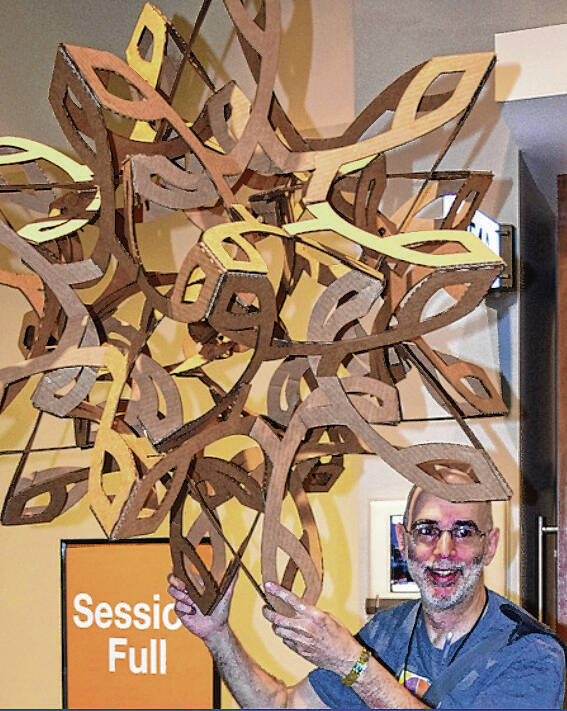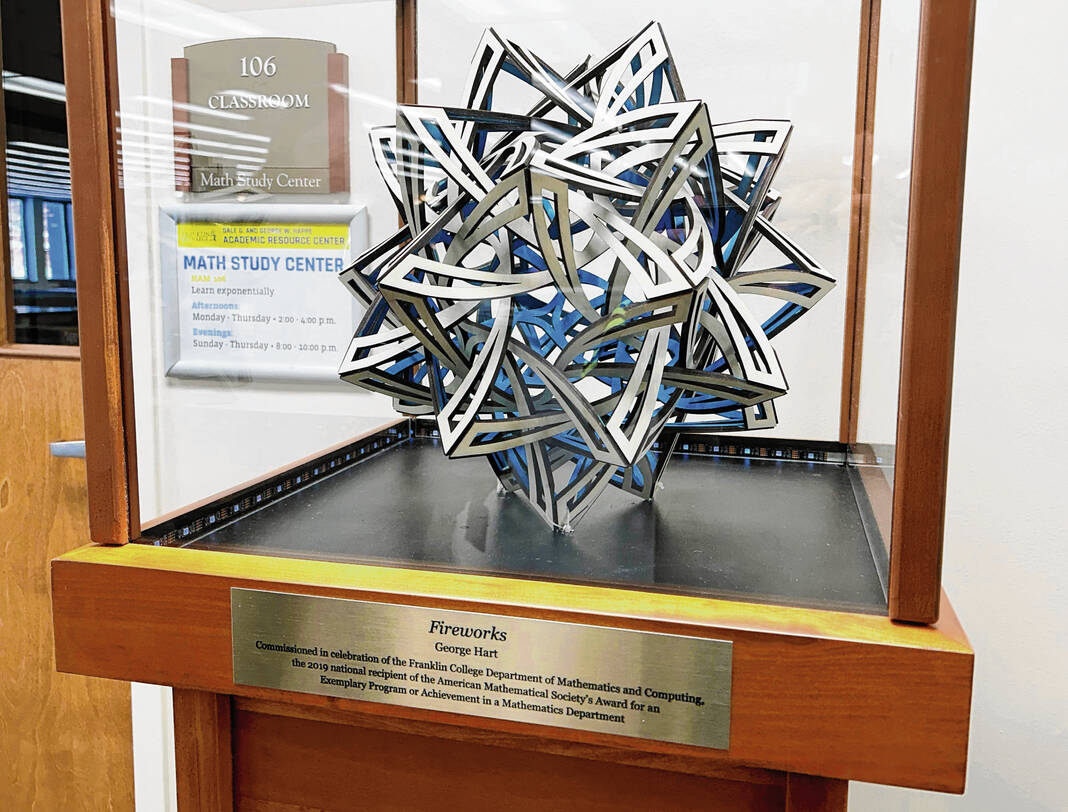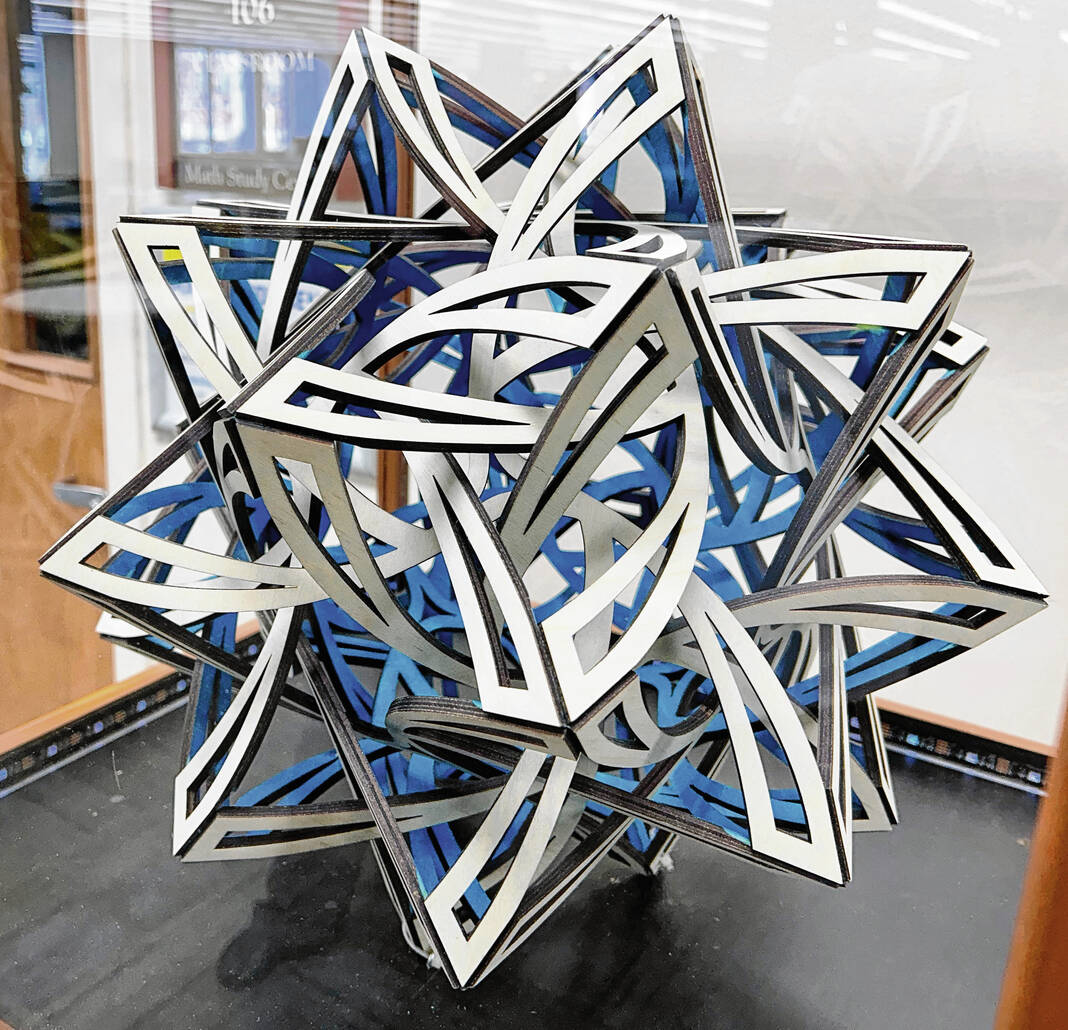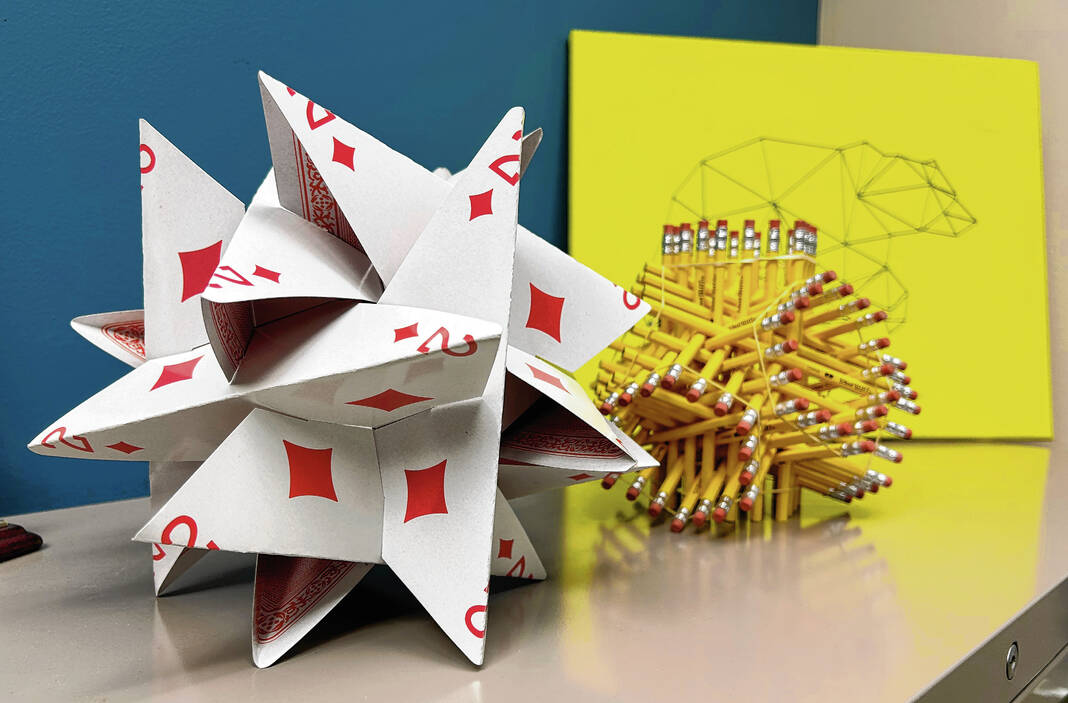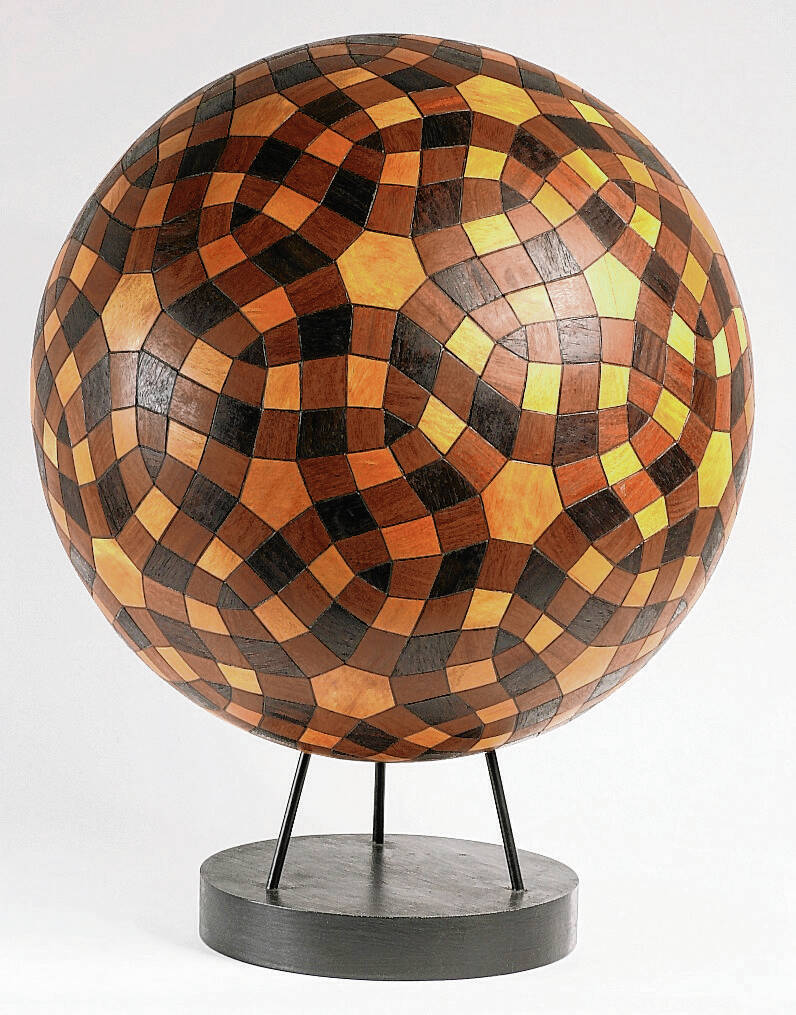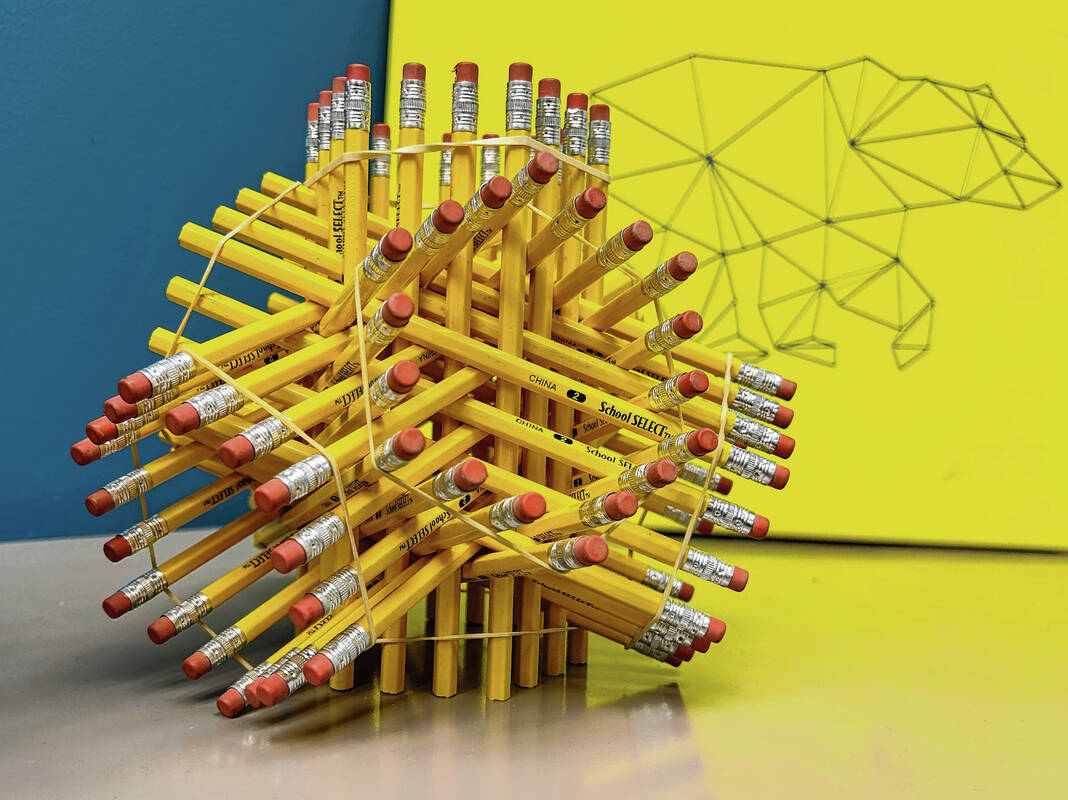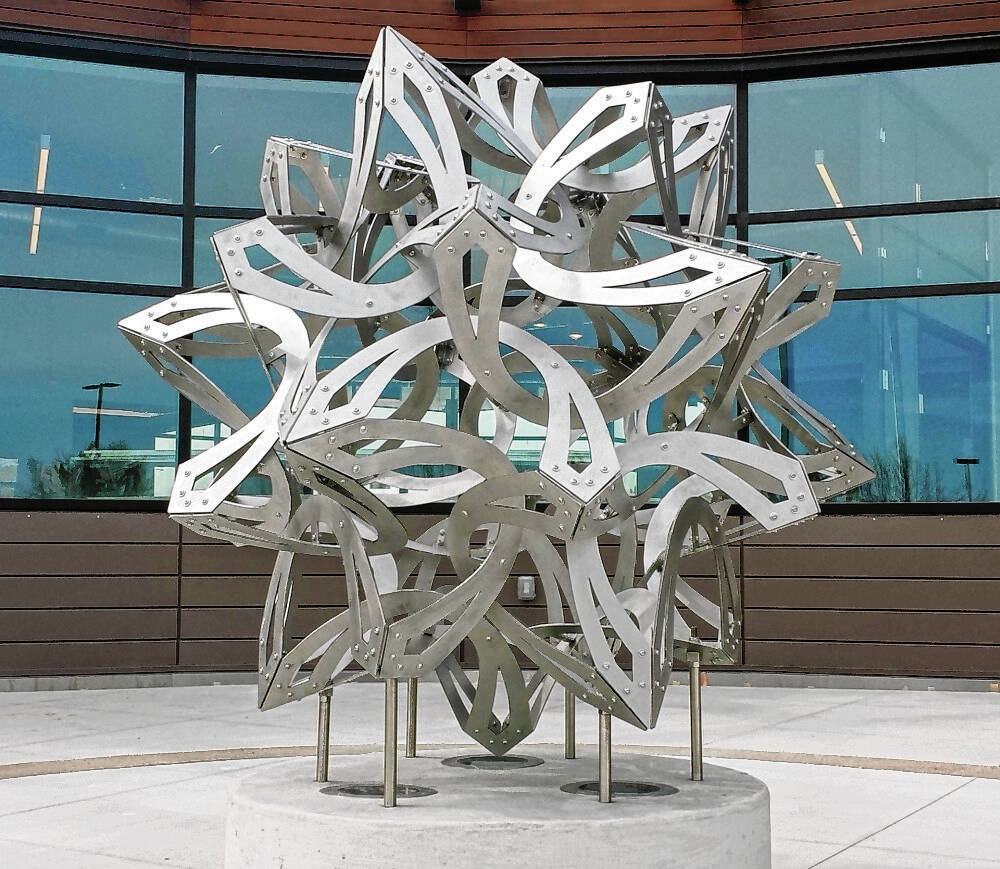Among the numbers and the formulas and the equations, a unique kind of art emerges.
Repeating shapes and forms fit together in a three-dimensional sculpture. Whorls and whirls of wood, aluminum, stainless steel and more materials bring geometry to life.
George Hart has spent his life immersed in mathematics. By moving it into visual art, his sculpture is designed to spark interest in math for everybody.
“If you love math, you see the beauty that mathematicians talk about and share in different ways. But that’s kind of an educated thing that you can’t see it obviously from the math people teach in school,” he said. “So I try to take some of that beauty of structure and pattern and regularity, and turn it into a physical form everyone can see.”
Hart, an internationally known mathematical sculptor and retired research professor in engineering, is bringing his flair and talent to Franklin College for a special visit. Over three days on campus, he will be visiting classes, meeting with faculty and students in small groups, and offering a hands-on workshop where students can create their own mathematical sculptures.
On Feb. 27, he’ll be offering a public lecture to the local community, where he’ll illustrate one of his core ambitions — “making math visible.”
“I hope it brings more curiosity — trying to see more math in the world around us. It’s out there,” said Stacy Hoehn, a professor of mathematics at Franklin College. “Having an inquisitive mindset, appreciating that math can be creative, is important.”
Visitors to Franklin College’s Hamilton Library are already familiar with Hart’s artwork. Outside the library’s Math Study Center is a glass-and-wood display case containing a mesmerizing confluence of wooden pieces. The repeating points and curves, made out of wooden pieces painted in white and blue, evoke pyrotechnics in the sky.
The sculpture was commissioned in celebration by the school’s mathematics department. It’s fitting, then, that the piece’s title is “Fireworks.”
“A lot of people think of math as something that is very systematic, that’s it’s just numbers. But math is so much more, and George is good at conveying that with his work,” Hoehn said.
Hoehn has been a fan of Hart’s work for years. She first encountered his work online, and taught herself to make some of his impossible-looking designs out of playing cards and pencils.
“I’m amazed how George’s brain works, where it all perfectly fits together. When you’re putting that last hexagon of pencils in there, there is only one way it fits,” Hoehn said.
In 2018, she was attending a conference at Miami University when she heard Hart speak.
“It was all based on his work of trying to make mathematical art be all around so people are inspired, and naturally questions will come up,” she said. “I talked to him a little bit about that at the conference, asking how he does what he does.”
Hoehn connected Hart with Franklin College in 2019, after the school’s math program was chosen as the winner of the American Mathematical Society’s Award for an Exemplary Program or Achievement in a Mathematics Department.
In celebration of the recognition, department staff wanted to make a permanent contribution to the campus community. Hoehn suggested having Hart create a sculpture for them.
“I reached out to him via email, and asked if it would be feasible to make a mathematical sculpture on our campus,” she said.
Hart is an interdisciplinary sculptor, mathematician, computer scientist, and educator, recently retired as a research professor at Stony Brook University in New York. His geometric sculptures have been recognized around the world for their mathematical depth as well as the creative use of materials.
He became a pioneer in using computer technology and 3D printing in the design and fabrication of sculpture.
“It’s different in every case, but differently I’m aware of some structure I like, that I’m interested in my mind in some sense,” Hart said. “Then I ponder it for some time and something occurs to me — there’s no turn-the-crank aspect.”
Examples of his artwork can be seen at major universities, such as the Massachusetts Institute of Technology, University of California Berkeley, Duke University, Princeton University, and Stony Brook.
He has received praise and awards in numerous exhibitions, including a New York State Council for the Arts Individual Artist’s Award. He has been invited to lecture and show his art across the country and around the globe, as well as designing sculptures to be assembled by large groups of people.
His ongoing project is called Making Math Visible, demonstrating how mathematics is cool and creative in unexpected ways.
“I want to share the joy of math in a non-threatening, easy to approach mode,” he said.
Hart’s sculpture came together, and Franklin College leaders were preparing to host an unveiling to show of the brand new piece in Hamilton Library. Then the COVID pandemic scrapped those plans.
The college was able to hold an event revealing ‘“Fireworks,” with Hart taking part virtually. This will be a continuation of that celebration, with Hart appearing in-person.
He’s looking forward to sharing his insights into the work he does.
“Mathematics and art have always been essential to human appreciation of life and the world. It’s really the joy of thinking — seeing regularities and trying to extend the pattern,” he said. “The kinds of things you do in math class are closely related to what you’re doing in an artistic practice.”
Hart comes to Franklin as the William and Majorie Blackwell Scholar-In-Residence. During his time at the college, Hart will be a constant presence across campus. He will be speaking in both mathematics and art classes to share some of his experience and perspective.
He’ll take part in a lunch with math and art students, and helping students build the playing-card star in a workshop.
Much of the time will be simply informally being around students.
“Students will get a chance to pick his brain and get to know him a little bit,” Hoehn said. “He’ll be present on campus for about two days, and interacting with as many people as possible.”
The public lecture, scheduled for 7 p.m. Feb. 27 in the Branigin Room of the college’s Napolitan Student Center, will be an opportunity to understand how math is beautiful, seeing its aesthetic.
“That’s something professional mathematicians learn when they’re in university — what’s a beautiful theorum or what’s an elegent proof,” he said. “Those ideas unite mathematics with the arts. I want people to think about those connections.”
IF YOU GO
“Make Math Visible”
What: A public lecture by George Hart, a sculptor and applied mathematician who uses geometric principles to create artwork. Hart is the William and Majorie Blackwell Scholar-In-Residence.
When: 7 p.m. Feb. 27
Where: Branigin Room, Napolitan Student Center, Franklin College campus.
Cost: Free and open to the public


